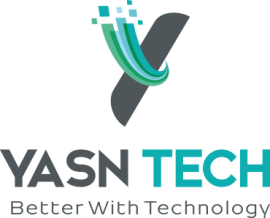The H-1B visa is one of the most sought-after work visas for foreign professionals looking to work in the United States. With the H-1B Cap 2025-2026 season approaching, it’s crucial to understand the H-1B lottery process, timelines, and registration requirements to maximize your chances of selection.
What is the H-1B Cap?
The H-1B cap refers to the annual numerical limit on H-1B visas set by the U.S. Citizenship and Immigration Services (USCIS). Each fiscal year, USCIS issues a fixed number of H-1B visas to skilled workers in specialty occupations.
H-1B Cap Categories
- Regular Cap – 65,000 visas available.
- Master’s Cap (Advanced Degree Exemption) – An additional 20,000 visas for applicants with a U.S. master’s degree or higher.
H-1B Cap 2025-2026 Registration Process:
The H-1B registration process is conducted online via the USCIS H-1B electronic registration system. Here’s how the process works:
1. Employer Registration
- U.S. employers must create an account on the USCIS online portal.
- Employers submit registrations for each applicant they wish to sponsor.
2. H-1B Lottery Selection
- If the number of registrations exceeds the cap, USCIS conducts a random lottery to select petitions for processing.
- Selected applicants proceed with H-1B petition filing.
3. H-1B Petition Filing
- Employers file Form I-129, along with supporting documents and Labor Condition Application (LCA) from the Department of Labor (DOL).
4. H-1B Visa Approval & Processing
- USCIS processes the applications and issues approvals, requests for evidence (RFEs), or denials.
H-1B Cap 2025-2026 Timeline
| Event | Date |
| Create a USCIS account | Any Time |
| H-1B Registration Opens | March 7, 2025 |
| H-1B Registration Closes | March 24, 2025 |
| H-1B Lottery Winners Are Notified | March25 – Mar30, 2025 |
| Create a USCIS account | Apr 01, 2025 |
| H-1B petition | Apr 2025 |
Key Requirements for H-1B Visa:
To qualify for the H-1B visa, applicants must meet these eligibility criteria:
- Job Offer from a U.S. Employer: The employer must file the petition on behalf of the applicant.
- Specialty Occupation: The job must require a bachelor’s degree or higher in a relevant field.
- Labor Condition Application (LCA): Employers must obtain DOL certification ensuring fair wages and working conditions.
Tips to Improve H-1B Lottery Chances:
- Apply through multiple employers (if eligible and genuine job offers are available).
- Ensure timely and accurate submission of registration details.
- Consider alternative visa options such as L-1 visa, O-1 visa, or EB-2/EB-3 Green Card pathways.
Conclusion:
The H-1B Cap 2025-2026 season requires careful planning to increase the chances of selection. Employers and applicants should stay updated on USCIS announcements, follow registration guidelines, and prepare for possible alternatives. If you need assistance with H-1B visa sponsorship, petition filing, or legal consultation, consult an immigration attorney or reliable visa service provider.
Contact us:
For H-1B visa assistance, application filing, or expert guidance, contact us today! 📩
Phone: +1 (516)366-5767,
Phone: +91 63098 26290,
Email: dave@yasntech.com
Fill in your Contact Details for H-1B USA Visa Info:
https://docs.google.com/forms/d/e/1FAIpQLSf5GA3SCX1lgz35LiXdOjworGG-GZPruBEcGjlaDGpX6jSf4g/viewform







